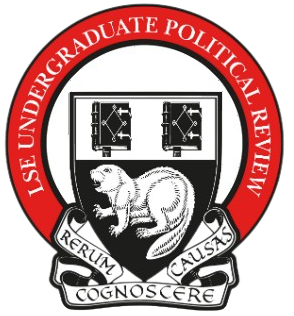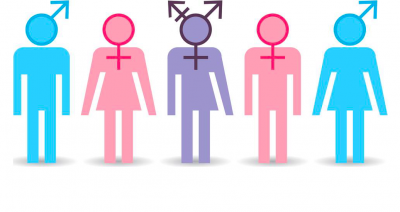At the core of the UK’s political system, the unitary state model facilitates cohesion across England, Wales, Scotland and Northern Ireland. Unitary political systems are characterised by the supremacy and sovereignty of the central government that grants power to local governments.
Source: UK Map 360
The recent rise of political movements centred on demands for devolved independence has been paradoxical to the viability of the unitary state model. Contrary to conventional wisdom, devolution has not quelled demands for independence over time; rather, it has strengthened political discourse on the survival of the UK’s unitary model.
A Brief History of the Four Nations
To understand the origins of the United Kingdom, Anglo-Saxon history provides the historical context for the formation of the country. Æthelstan, a West Saxon king, united various kingdoms under Western Saxon control through conquest and strategic political alliances. Ancient coins refer to Æthelstan as the “King of All Britons”, marking the beginnings of a unified England.
The takeover of Wales gradually began with the victory of William the Conqueror in 1066. William I rewarded loyal supporters with land in the Marches (borderlands between England and Wales) enabling Norman presence to encroach on Welsh territory. In 1277, England annexed Wales through a series of military campaigns, with the struggle for Wales ending in 1283 with the capture of the Prince of Wales.
Despite numerous territorial wars being fought between Scotland and England, it was not until the 1707 Acts of Union that the entity of ‘Great Britain’ was formally created. This enabled Scotland and England to share parliamentary institutions, resulting in the dissolution of the Scottish Parliament.
The colonisation of Ireland was led by the Normans in the late 12th century. However, the formal unionisation of Britain and Ireland only began in 1800 with the Acts of Union. By the 19th century, the issue of home rule became increasingly divisive and contentious. To address these political divisions, the Irish partition took place in 1921. Independence was granted to all of Ireland except for the six Protestant counties of the province of Ulster, which became known as Northern Ireland and remained in the union.
Independence Movements in the 21st Century: Scottish and Irish Accounts
All Under One Banner rally in 2020 / Image: Sky News
In 2014, a referendum on Scottish independence took place in which 55.3% of the electorate voted against independence. However, recent opinion polls show evidence demonstrating that the Scottish Independence movement has garnered a strong, but marginal lead with the Scottish electorate. The issue of Scottish independence has become increasingly salient in Scottish politics after Brexit – notably, every council in Scotland had ‘Remain’ majorities, resulting in Scotland having the largest ‘Remain’ vote share across the four UK nations.
Source: BBC News
As exhibited in the 2016 Brexit referendum, the stark divisions in views about EU membership across the UK fuelled calls for a second referendum on Scottish independence. Nicola Sturgeon, Scotland’s longest-serving first minister, asserted that the victory of pro-independence parties in the 2021 Scottish elections provided an electoral mandate for this second Scottish independence referendum.
The political demands for independence are not unique to Scotland. In England, the distinct Celtic identity of the Cornish people has emboldened the movement for Cornish independence. Under the European Framework Convention for the Protection of National Minorities, the Cornish people are officially recognised as a national minority. Cornish Nationalist Parties leverage Cornwall’s unique ethnic, cultural and constitutional position to campaign for political autonomy. Whilst political efforts for Cornish independence have not yet translated into electoral impact, the endurance of the Cornish independence movement indicates elements of dissent under the unitary model.
Source: House of Commons Library
The 2016 Brexit referendum vote complicated border agreements between Northern Ireland and Ireland. As a UK nation, Northern Ireland officially left the EU on the 1st of February 2020 while the Republic of Ireland remained an EU member state, creating divergences in regulations of goods. During turbulent Brexit debates, a campaign advocating for a united Ireland re-emerged. Sinn Féin, an Irish Republican party, explicitly cited aims to “facilitate a peaceful, smooth transition to a new and united Ireland” as a main political objective in their 2022 manifesto. In the 2022 Northern Ireland assembly election, Sinn Féin won 29% of the popular vote and 27 seats, marking the first time an Irish republican party commanded the most seats in the Northern Ireland assembly. Although the electoral success of Sinn Féin cannot be directly equated to support for a united Ireland, it suggests that there may be growing support for the reunification of Ireland.
Whilst proponents of the unitary model highlight the benefits of centralised control, it is clear that the unitary system is a source of contention across the UK.
Devolution as a Solution
Devolution is formally defined as the decentralisation of government power. To enhance democratic representation, Blair’s New Labour government introduced devolution referendums and reforms. Since the 1997 Scottish devolution referendum, policy areas such as health, education and transport have been delegated to devolved bodies while the central government retains reserved powers pertaining to the UK’s external affairs such as foreign relations.
Has devolution been delivered equally across the four nations? In the UK, the devolution of powers has been asymmetric. Asymmetric devolution arises from differing policy areas and levels of power assigned to different devolved settlement bodies. In 1999, most areas of the justice system were delegated to the Scottish devolved body. In response to ever-increasing support for Scottish independence, the central government decentralised policy areas such as railway policing. Devolution was utilised as a mechanism to uphold the unity of the union while addressing regional demands for independence.

Tony Blair pictured in support of New Labour in 1999 / Image: BBC News
Comparatively, in Wales, policing power remained a reserved policy area, enabling the central government to retain decision-making power for the Welsh justice system.
The Future of the Union
Labour Prime Minister Tony Blair envisaged devolution as a solution to maintain the unity of the UK political system. In a 2019 interview with the Institute for Government, Blair stated that it was important for devolution to succeed as “support for independence would be unstoppable” in Scotland without decentralisation.
On the other hand, critics highlight that devolution has renewed the demand for sovereignty and autonomous rule. The growth of independence movements poses a dangerous threat to the long-term viability of the unitary model in the UK. Whilst the central government refuses to grant further referendums for independence, it is clear that far-reaching political reforms must take place to maintain the unity of the UK.
by Ying Zeng
Cover Image: Second National March for Welsh Independence July 2019 via Wikimedia Commons








